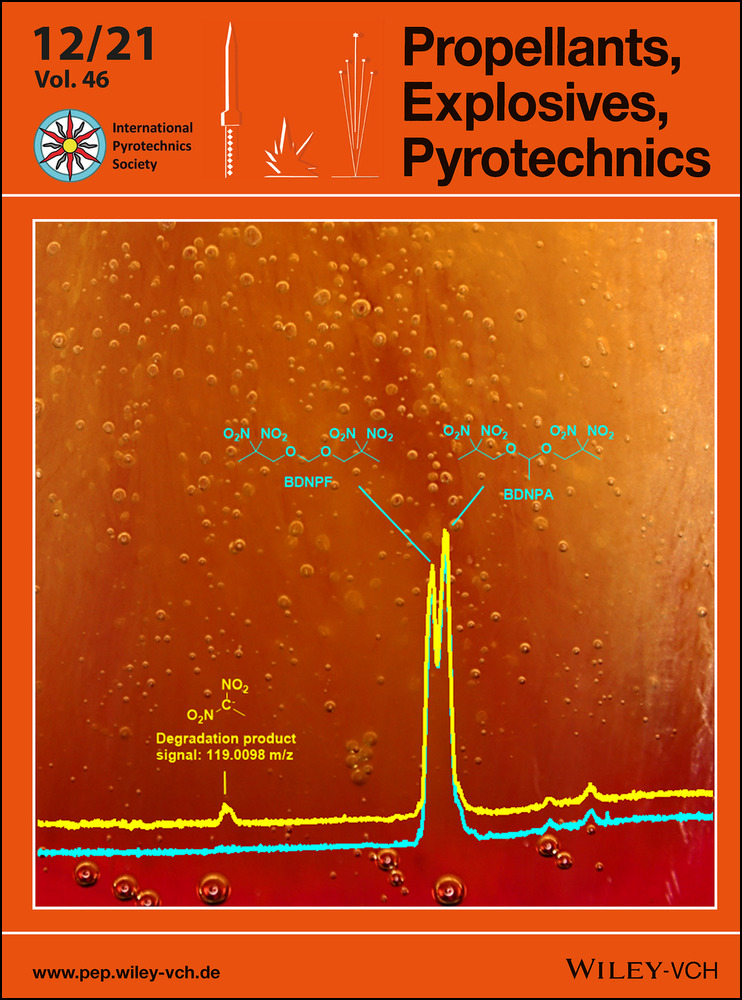Construction of CL-20 Surface Layer with Different Wetting Properties and its Effect on Slurry Rheological Behavior and Mechanical Sensitivities
Abstract
To have a deep understanding of the effects of surface wettability on the mechanical sensitivity and rheological characteristics of PBX slurry, CL-20 particles with hydrophilic property was prepared through a polymerization process of dopamine, and CL-20 particles with hydrophobic property were prepared through a condensation polymerization process of hexadecyltrimethoxylsilane. The morphology, surface element content and surface wettability of CL-20 crystals before and after modification were characterized by scanning electronic microscope (SEM), X-ray photoelectron spectroscopy (XPS), and contact angle test. The rheological characteristics of CL-20 based PBX slurry showed that the interaction between explosive particles and binder was changed with different surface wettability of CL-20. The weaker interaction between CL-20@hydrophobic and binder lead to weaker solid-liquid friction, resulted in lower apparent viscosities of CL-20@hydrophobic based PBX slurry at high shear rate. The mechanical sensitivity of wax coated CL-20 with different surface wettability was tested. CL-20@hydrophobic-wax exhibited better mechanical stability compared to CL-20-wax and CL-20@hydrophilic-wax, probably owning to the weaker interaction between CL-20@hydrophobic surface and wax.
Open Research
Data Availability Statement
The data that support the findings of this study are available from the corresponding author upon reasonable request.




